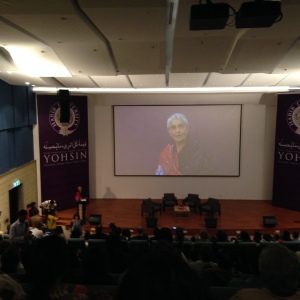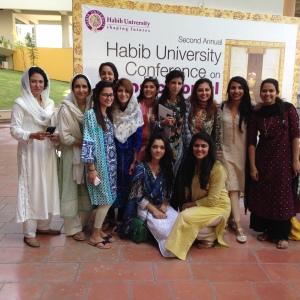October 25 2014 field trip.
Month: October 2014
Narmeen Farooqui Assignment 2.
Opened: January 21, 2012
Closed: April 1, 2012
Location: In the Bartels Gallery, Floor 1L, and the Moak, Class of 1953, Schaenen, Opatrny, and wing galleries, Floor 2L
The exhibition is part of an ongoing project initiated in 2005 by Green Cardamom, a London-based nonprofit arts organization.
Artists who represented: Bani Abidi, Francis Alÿs, Sarnath Banerjee, Farida Batool, Adam Broomberg & Oliver Chanarin, Muhanned Cader, Duncan Campbell, Iftikhar Dadi, DAAR, Anita Dube, Taghreed Elsanhouri, Sophie Ernst, Gauri Gill, Shilpa Gupta, Zarina Hashmi, Emily Jacir, Ahsan Jamal, Nadia Kaabi-Linke, Amar Kanwar, Noa Lidor, Mario Mabor, Nalini Malani, Naeem Mohaiemen, Tom Molloy, Rashid Rana, Raqs Media Collective, Jolene Rickard, Hrair Sarkissian, Seher Shah, Surekha, Hajra Waheed, Young-Hae Chang Heavy Industries, and Muhammad Zeeshan.
Curator: This exhibition is co-curated by Hammad Nasar (curator and co-founder of Green Cardamom) and Iftikhar Dadi (Associate Professor of Art History and Department Chair Art at Cornell University).
Line of control: the exhibition is about Partition as a Productive Space investigates the historic upheaval of the 1947 partition of India that spawned the nations of Pakistan and later Bangladesh.
- Not only that it also addresses physical and psychological borders, trauma, and the reconfiguration of memory in other partitioned areas: North and South Korea, Sudan and South Sudan, Israel and Palestine, Ireland and Northern Ireland, Armenia and its diaspora, and questions of indigenous sovereignty in the United States
- It shows how living within and across these partition lines can be a messy, bloody business but also offers a productive space where new nations, identities, languages, and relationships emerge.
- The exhibition explores the products and remainders of partition and borders characteristic of the modern nation-state, and includes the continued impact of colonization, the physical and psychic violence of displacement, dilemmas of identity and belonging, and questions of commemoration.
- More than forty works of video, prints, photographs, paintings, sculpture, and installation by international artists delve into the past and explore the present to expose the seductive simplicity of drawing lines as a substitute for learning how to live with each other.
http://museum.cornell.edu/exhibitions/view/lines-of-control.html
http://nasher.duke.edu/exhibitions/lines-of-control/
Sophie Ernst
Home: Gulzar 2008-11
HOME is a major ongoing project confronting political turmoil and displacement with individual memories of home and ideal places. Ernst interviews people forced to leave their homes due to political upheaval, such as during the Partition of South Asia in 1947, and builds an architectural model of the houses they describe. She then projects onto this sculpture video footage of the person’s hands as they describe their memory of that building, transforming the inanimate object into a virtually inhabited space, and ascribing a profound intimacy.
It is said by Eliza Williams, Frieze Magazine that “The most affecting work in ‘Lines of Control’ is a piece by the Berlin-based artist Sophie Ernst, which addresses displacement through interviews with people who lived through it.”
Sophie says herself that The HOME project examines the opposite situation: peoples talk of places they left at a definite moment in time, but while they remember it, time extends into eternity. I try to translate this transformation into a spatial installation combining imagined or remembered pictures with narrative and a projection “screen”. It is their “recherche du temps perdu” which I have to express in sculptural terms. Although the frame of reference of the interviews is specific to context and people, I don’t want to reduce the work to a historical illustration. The question is: If and how a time-specific personal memory translates into a general image of our past and how this is carried on into the future on a local and global level.”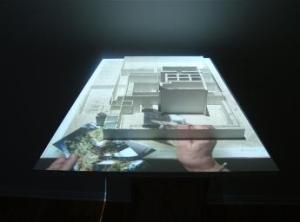

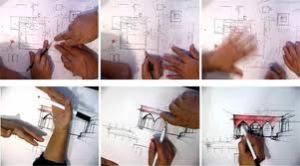

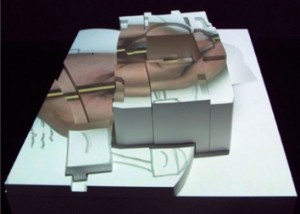
Sophie Calle- Take care of yourself
GENDER STEREOTYPES IN MASS MEDIA. CASE STUDY: ANALYSIS OF THE GENDER STEREOTYPING PHENOMENON IN TV COMMERCIALS
Powerful Illustrations Show Women How To Fight Gender Prejudices
Powerful Illustrations Show Women How To Fight Gender Prejudices 378K views 5 days ago by Laura Lokkie Offensive statements about girls and women are more common than you think. Everyday, females around the world hear rude and abusive words towards them, so Brazilian illustrator Carol Rossetti decided to do everything that was in her hands to change that. The artist created a series of supportive illustrations, called “Women”, that helps motivate women in their struggle against gender prejudices and women discrimination. The on-going project started in May, and Rossetti publishes her work on her blog and Facebook. Although the images were originally created in Portuguese, the popular illustrator got some help in translating them into other languages. The message couldn’t be clearer: girl power! More info: carolrossetti.com.br | Facebook
Posted by Razin Rubin
zara sochiye – came across this on facebook (Zoila Solomon)
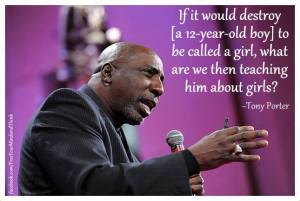 “I can remember speaking to a 12-year-old boy, a football player, and I asked him, ‘How would you feel if, in front of all the players, the coach told you, you were playing like a girl?’ Now I expected him to say that I’d be sad or I’d be mad or I’d be angry or something. No, the boy said to me, ‘It would destroy me.’ And, I said to myself…. if it would destroy him to be called a girl, what are we then teaching him about girls.” — Tony Porter
“I can remember speaking to a 12-year-old boy, a football player, and I asked him, ‘How would you feel if, in front of all the players, the coach told you, you were playing like a girl?’ Now I expected him to say that I’d be sad or I’d be mad or I’d be angry or something. No, the boy said to me, ‘It would destroy me.’ And, I said to myself…. if it would destroy him to be called a girl, what are we then teaching him about girls.” — Tony Porter
This quote is from an excellent TED talk by Tony Porter, an educator and activist who is internationally recognized for his efforts to end violence against women. In his talk, “A Call to Men,” Porter explores the social conditioning that he refers to as the “man box,” which can lead men to disrespect, mistreat, and abuse women and each other.
To watch his talk, which is especially timely during October’s Domestic Violence Awareness Month, visithttp://bit.ly/1s4Nqwz. Porter is also the cofounder of A CALL TO MEN: The National Association of Men and Women Committed to Ending Violence Against Women: http://www.acalltomen.org/
At A Mighty Girl, we believe that introducing boys to female role models is an important part of the process of fostering respect for girls and women. To find over 450 true stories of trailblazing women to share with your children, visit our “Role Model” biography collection at http://www.amightygirl.com/books/history-biography/biography
For Mighty Girl books for teen readers (13+) that address issues of abuse and violence and offer a helpful way to spark conversations around this important topic, we recommend “A Step From Heaven” (http://www.amightygirl.com/a-step-from-heaven), “Speak” (http://www.amightygirl.com/speak), “I Hadn’t Meant to Tell You This” (http://www.amightygirl.com/i-hadn-t-meant-to-tell-you-this), and “If You Find Me” (http://www.amightygirl.com/if-you-find-me).
To teach older teens and adults about the warning signs of an abusive relationship and how to get help, a useful resource is “Stop Signs: Recognizing, Avoiding, and Escaping Abusive Relationships” at http://www.amightygirl.com/stop-signs
If you’re a parent concerned that your daughter may be in an unhealthy relationship, check out the books “But I Love Him: Protecting Your Teen Daughter from Controlling, Abusive Relationships” at http://www.amightygirl.com/but-i-love-him and “Saving Beauty From The Beast: How to Protect Your Daughter from an Unhealthy Relationship” at http://www.amightygirl.com/saving-beauty-from-the-beast
